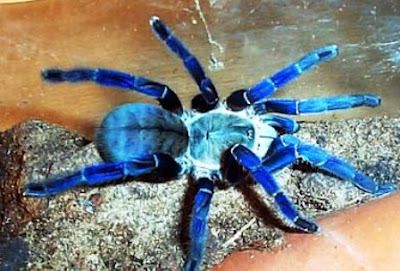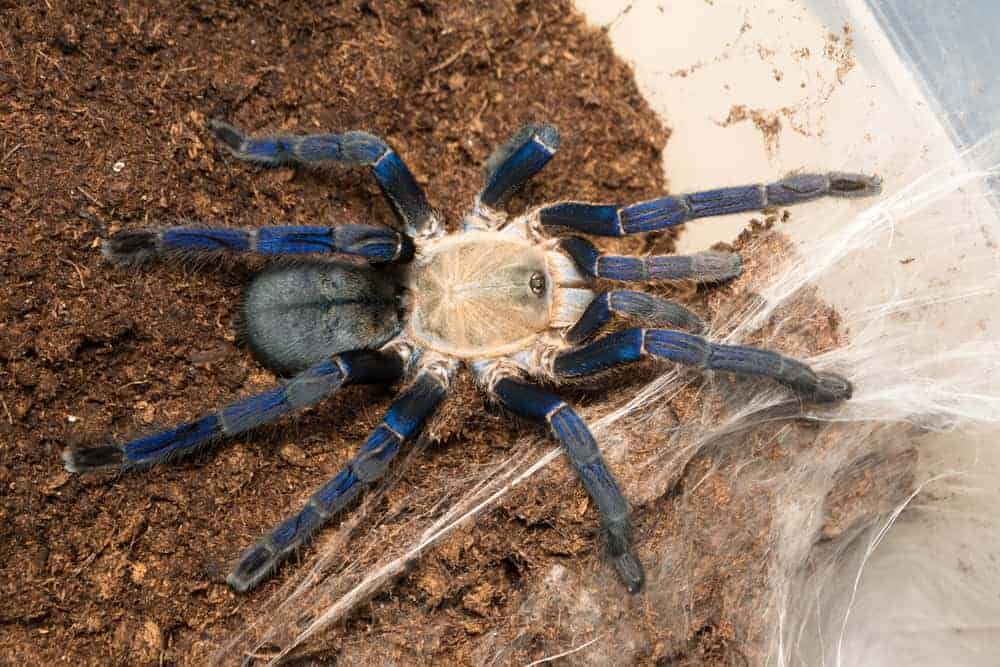Introduction
Cobalt Blue Tarantula The world of arachnids is home to a myriad of species, each uniquely captivating in its own right. Among the many fascinating creatures that inhabit this realm, the Cobalt Blue Tarantula (Haplopelma lividum) stands out as a true marvel. With its stunning appearance, intriguing behavior, and a touch of mystery, this tarantula has become a sought-after species among arachnid enthusiasts. In this article, we will delve into the captivating world of the Cobalt Blue Tarantula, exploring its characteristics, habitat, behavior, and much more.
Appearance and Identification
The Cobalt Blue Tarantula earns its name from the vibrant and mesmerizing cobalt blue coloration that adorns its exoskeleton. This dazzling hue sets it apart from other tarantula species, making it instantly recognizable. The intensity of the blue color can vary among individuals and is often more pronounced in mature specimens.
must read= un verano sin ti merch
Measuring approximately 6 to 7 inches in leg span, the Cobalt Blue Tarantula showcases a robust and sturdy build. Its body is covered in fine, velvety hairs, adding to its overall allure. The striking contrast between the deep blue exoskeleton and the dark-colored hairs creates a visually stunning creature that has become a favorite among tarantula enthusiasts and collectors alike.
Habitat and Distribution
Native to the evergreen forests of Southeast Asia, the Cobalt Blue Tarantula predominantly inhabits the regions of Thailand, Myanmar, and Laos. In its natural habitat, this tarantula constructs burrows in the ground, providing it with a secure retreat. The humid and tropical climate of these areas suits the Cobalt Blue Tarantula’s preferences, allowing it to thrive in a controlled environment.
Behavior and Lifestyle
The Cobalt Blue Tarantula is known for its reclusive nature and nocturnal habits. During the day, it typically retreats to its burrow, emerging at night to hunt for prey. Like many tarantulas, it primarily feeds on insects, using its fangs to inject venom and incapacitate its prey. While its venom is not considered medically significant to humans, handling any tarantula should be approached with caution.
In terms of temperament, the Cobalt Blue Tarantula is often described as skittish and defensive. When threatened, it may exhibit defensive behaviors such as rearing up on its hind legs or rubbing its abdomen with its hind legs to release urticating hairs—a common defense mechanism among tarantulas.
Reproduction and Lifespan
The reproductive process of the Cobalt Blue Tarantula is a complex and fascinating aspect of its life cycle. Mating typically involves a careful dance between the male and female, with the male cautiously approaching the female’s burrow. Post-mating, the female may lay an egg sac, which she guards fervently until the spiderlings emerge.
The lifespan of the Cobalt Blue Tarantula is relatively long compared to other tarantula species. In captivity, with proper care and conditions, they can live up to 10 to 15 years. The longevity of these creatures adds to their appeal for those committed to the responsibility of tarantula ownership.

Care and Enclosure
For those considering keeping a Cobalt Blue Tarantula as a pet, providing the right environment is crucial. A secure enclosure with sufficient substrate for burrowing, maintaining a consistent temperature and humidity level, and offering a varied diet are essential aspects of their care. Additionally, providing hiding spots and minimizing disturbances contribute to the well-being of these tarantulas.
FAQs
1. Can the Cobalt Blue Tarantula be kept as a pet?
Yes, the Cobalt Blue Tarantula is a popular choice among tarantula enthusiasts as a pet. However, it requires careful attention to its habitat and feeding requirements.
2. Is the venom of the Cobalt Blue Tarantula dangerous to humans?
While the venom of the Cobalt Blue Tarantula is not considered medically significant to humans, handling any tarantula should be done with caution. Their defensive behaviors may include the release of urticating hairs, which can cause irritation.
3. What is the recommended enclosure size for a Cobalt Blue Tarantula?
A suitable enclosure for a Cobalt Blue Tarantula should provide enough space for burrowing and include a substrate for this purpose. A tank with dimensions of at least 12x12x12 inches is a good starting point, but larger enclosures are often recommended.
4. What is the ideal temperature and humidity for the Cobalt Blue Tarantula?
The ideal temperature for the Cobalt Blue Tarantula ranges between 75 to 85 degrees Fahrenheit, with a humidity level of 75% to 80%. Maintaining these conditions is crucial for the well-being of this species.
5. How often should a Cobalt Blue Tarantula be fed?
Cobalt Blue Tarantulas should be fed appropriately sized insects, such as crickets or roaches, approximately once a week. Adjustments may be necessary based on the tarantula’s age and individual appetite.

Conclusion
In the realm of arachnids, the Cobalt Blue Tarantula stands out as a creature of extraordinary beauty and complexity. Its vibrant appearance, coupled with intriguing behaviors and a captivating life cycle, makes it a subject of fascination for arachnid enthusiasts and researchers alike. Whether observed in the wild or kept as a pet, the Cobalt Blue Tarantula continues to mystify and inspire awe, shedding light on the remarkable diversity of our natural world.
